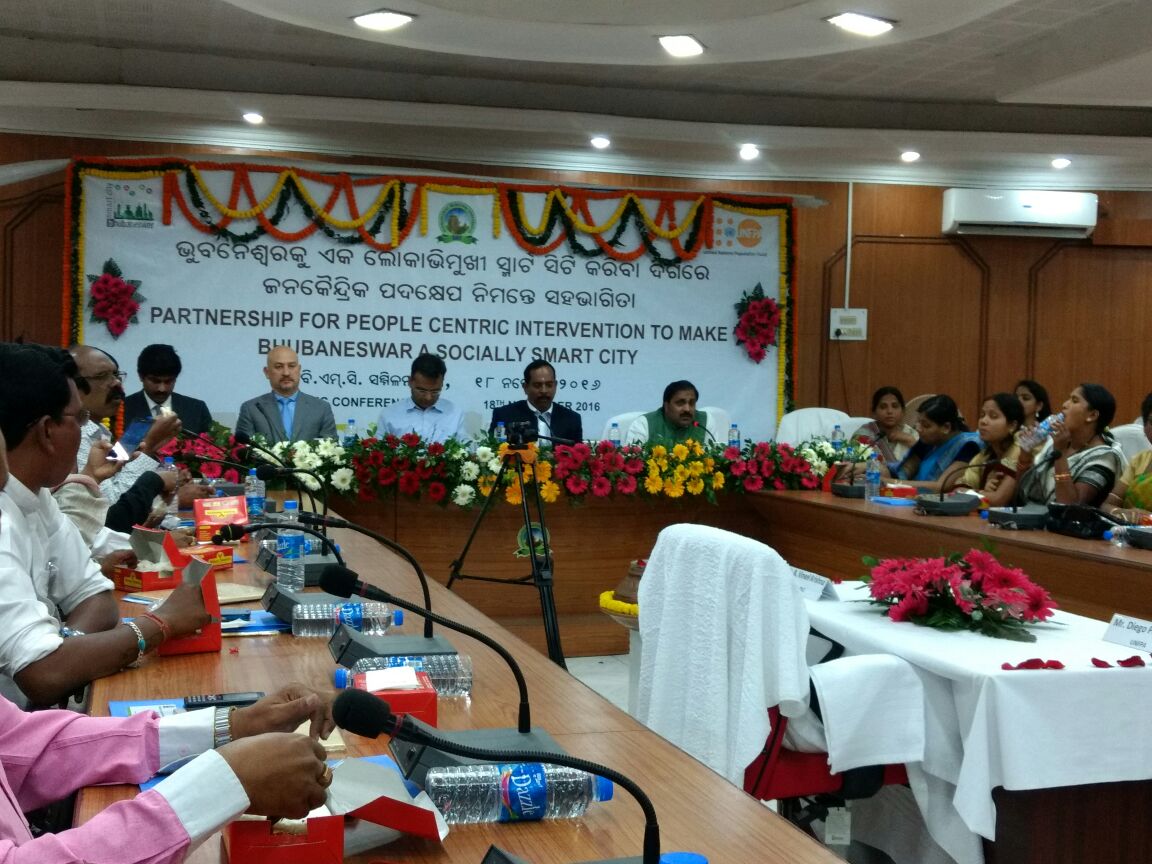The Bhubaneswar Smart City Limited today signed an MoU with the United Nations Population Fund (UNFPA) to take forward in Odisha the ‘New Urban Agenda’ adopted a month ago by the UN member states at Quito, Ecuador.
The Quito Declaration stresses upon re-addressing the way cities and human settlements are planned, designed, financed, developed, governed and managed, in order to reduce inequalities; promote sustained, inclusive and sustainable economic growth; and achieve gender equality and the empowerment of all women and girls, said a press release.
The Bhubaneswar Municipal Corporation-UNFPA collaboration envisions a smart city with special focus on the needs of young people, girls and women, it said.
To promote safety and security of girls and women, specially in urban slums, safety audits and community engagement programmes are on the anvil, the release said.
UNFPA’s expertise in analysing population data will help plan and deliver services that are equitable and sustainable.
A range of innovative interventions will help look beyond a brick and mortar blueprint to factor in people-centric interventions and to name a few, are The Citizen Connect programme, Support My City volunteer programme and Neighbourhood Watch programme, it said.
To tap the demographic dividend, a youth-centric and youth -led integrated social intervention will be implemented in educational institutions of Bhubaneswar, with several earmarked for the slums of Bhubaneswar Town Centre District Area.
The MoU also looks at addressing issues and needs of women
and adolescent girls, including safety, gender-based violence and barriers to access health services, the release said.
At a special function organised for signing the MoU, Odisha’s Tourism and Culture minister Ashok Chandra Panda said having won the coveted Smart City Challenge, Bhubaneswar now needs to live up to the expectations of the people.
When Bhubaneswar was formed in 1948, it covered a mere 26 sq km with a population of 40,000. Today, the city spans over 135 sq km and has more than a million people.
More than two-third of this population rise has been due to migration from the hinterlands, which has also given rise to slums. As per the estimates of Bhubaneswar Municipal Corporation, 35 per cent of the city’s population lives in over 300 slums.
Speaking on the concept of a ‘socially smart city’, Diego Palacios, UNFPA Country Representative-India and Bhutan, said: “In order to be future-compliant, every city needs to place its people at the centre of development.”
The BMC-UNFPA collaboration will help pool expertise to assess and address the present and future requirements of vulnerable groups, such as the urban poor, women, specially adolescent girls, youth, migrants and older people, Palacios said.
“Young people have enormous potential to shape social development processes and contribute to change in norms and values. The Smart City initiative in Bhubaneswar is a unique opportunity to empower and engage young people as active partners in achieving the Smart City goals,” Palacios said.
PTI

